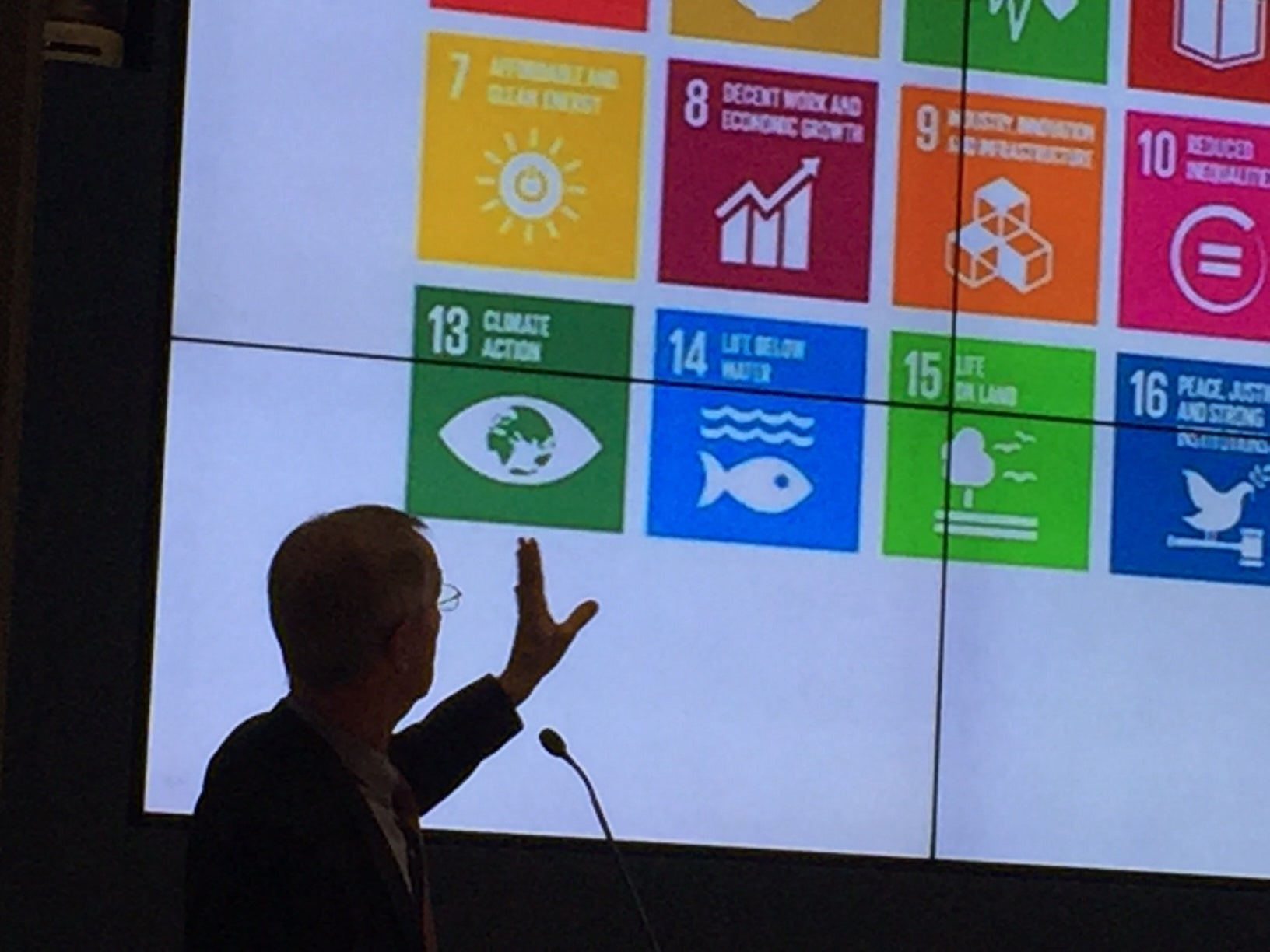Natural capital accounting (NCA) broadens our standard measures of economic performance (e.g. GDP) by taking stock of the very foundation of wealth- a nation’s environmental resources. In the last decade, we have witnessed a surge in activity in this space with significant advances in the transdisciplinary science of measuring the environment’s contribution to wealth and well-being as discussed in a previous publication of this blog. While our tools for quantifying natural capital and organizing this information in an accessible way have improved dramatically, it is now apparent that there is a critical need to link NCA with policy making.
The Dutch Foreign Ministry and World Bank WAVES advanced this agenda by hosting the first Natural Capital Accounting for Better Policy Forum on November 23 at The Hague, where I was invited to present our advances in the development of modelling approaches to link NCA with policy to generate relevant and timely advice. The Forum was an enriching experience, bringing together participants from low to high income countries with participants representing the spectrum from supply side NCA producers to demand side policy and decision-making users.
With support from the IDB’s BIO Program, I have led a team of international experts to develop the IEEM platform (Integrated Environmental-Economic Modeling). IEEM is the first of its kind modelling framework that integrates NCA with a powerful economy-wide modelling approach enabling us to generate forward looking evidence-based public policy and investment advice that considers not only impacts on income flows (GDP), but on the underlying wealth of a region or nation.
IEEM received special mention at the Forum as the first tool that bridges NCA with policy and decision making that enables users to ask ‘what-if’ questions and evaluate the trade-offs in terms of economic and environmental criteria. A first IEEM Policy Brief describes IEEM and its importance for informing policy.
Experience with environmental accounting is increasing fast. On the supply side, while developing capacity and the institutionalization of environmental accounting is critical, it is equally important for statistical agencies to engage in dialogue with the end users to deliver statistics that can be used for analytical purposes that meet priority demands. A good example of this is our recent work in Guatemala, where we applied IEEM to analyze its forest and fuelwood sector where negative health and environmental impacts arise from inefficient household fuelwood use.
There was a range of interesting work presented at the Forum. NCA applied to questions of the Sustainable Development Goals (SDGs) and Nationally Determined Contributions (NDCs) under the Paris Agreement were some applications that resonated with me. Statistics Sweden’s work in deriving indicators for the SDGs from NCA was particularly interesting in this regard and will inform my next application of IEEM.
I was pleased to meet with colleagues from Costa Rica’s Central Bank and reaffirm our commitment to collaboration in developing an IEEM for Costa Rica (IEEM-CRI) and build capacity within the Central Bank for the use of and institutionalization of IEEM. I also had the opportunity to discuss a new collaboration with the Colombian Government’s National Planning Department where we will develop an IEEM-COL, build capacity and apply it to evaluating the potential impacts of implementing Colombia’s Green Growth Strategy.
An ambitious agenda of work has arisen from the Forum which will center around thematic work (e.g. SDG’s and NDC’s), regional/country work, development of guidance materials and enhancing communications of the NCA-policy nexus. My IEEM Team will contribute two chapters to the new World Bank publication “Better Policy Decisions through NCA: Initial Stock-take and Ways Forward” which will be released at the World Bank’s Spring Meeting in April 2017. Our contribution will showcase the IEEM platform in generating timely, evidence-based policy advice applied to the SDGs and forest sector.
Admittedly, I returned from the Forum invigorated and inspired by the work of my colleagues around the globe and the interesting challenges that lie ahead. I truly believe that the lot of us who recognize that the environment is cornerstone to our wealth and well-being, and that beliefs should be consistent with action, has reached a critical mass and now the time is ripe for a paradigm shift toward a holistic appreciation of the interconnectedness of society, economy and environment.
How do we account for wealth? Measuring the environment’s contribution to wealth and well-being from el BID – the IDB on Vimeo.
If you are interested in Natural Capital and Biodiversity, follow us on Twitter @BIDecosistemas.


Leave a Reply